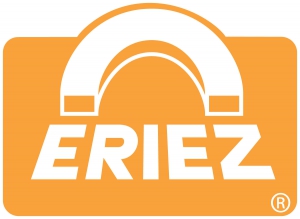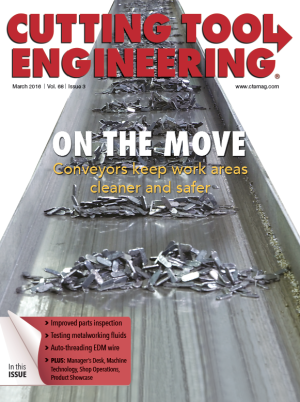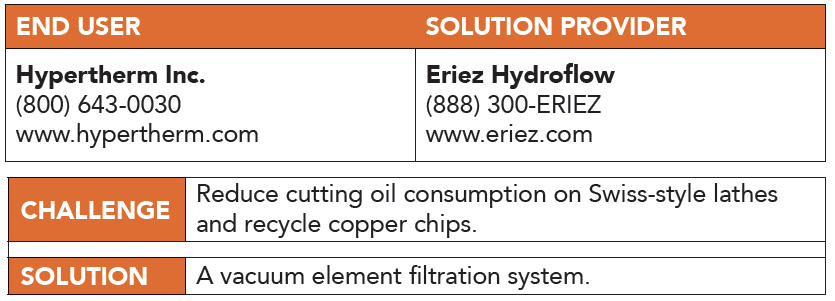
Hypertherm Inc. designs and manufactures plasma, laser and waterjet cutting systems, as well as CNC motion and height controls, CAM nesting software and consumables.
The Hanover, N.H.-based company opened a 165,000-sq.-ft. facility—Hypertherm’s newest—in Lebanon, N.H., in 2012. Among other machinery, the facility contains 26 multiple-axis, Swiss-style CNC lathes, which are used in the manufacturing of plasma cutting torch components, primarily electrodes and nozzles. The components are made of nonferrous materials.

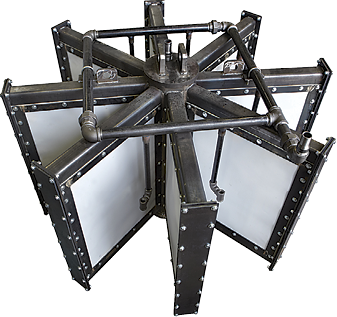
The filtration system designed by Eriez for Hypertherm incorporates 160 sq. ft. of filtering material. Images courtesy Eriez.

Hypertherm soon realized it needed to reduce the amount of cutting oil the lathes consume and recover the valuable copper chips the machines generate, noted Tom Woodward, manufacturing engineer, and Dave Bean, maintenance leader. Woodward contacted Tom Cassese, director of sales at Eriez HydroFlow, Erie, Pa., to map out a new method of recycling the oil and recovering the copper chips and fines.
The Eriez HydroFlow team, led by Cassese, recommended a Star Filter vacuum element filtration system combined with a temperature-control package and an oil-conditioning system.
“We gave Eriez a challenge to develop a system that would maintain oil heat at 90° F ±5° F, recapture all our turned and milled chips, recycle 90 percent of the vegetable-based oil and spec the system to handle up to 52 machines in the future,” Woodward said. “We have a 5,000-gallon system with about 160 gallons turning over every couple of hours on the machines. Eriez had to build a system big enough to filter and recycle that much oil. The oil we use fluctuates between $22 and $25 per gallon, so the cost savings alone are significant.”

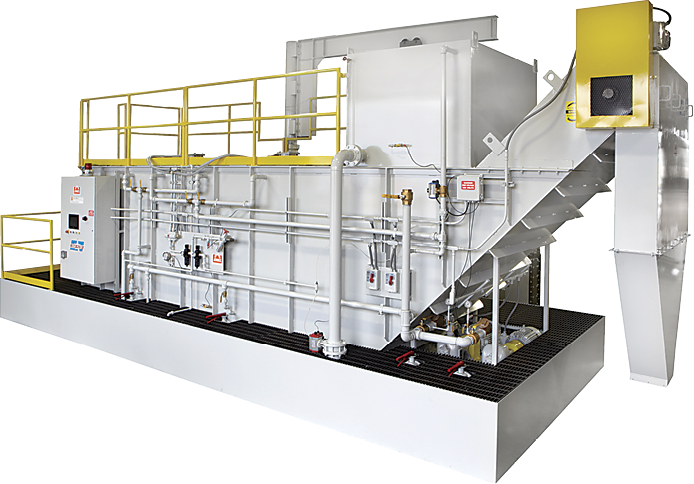
Eriez Hydroflow Model 160 HSF-4000 Star Filter serves 26 CNC lathes at Hypertherm.

According to Hypertherm, the company is dedicated to corporate social responsibility, where all associates have set ambitious goals for reducing waste, energy and carbon by 2020. As a result, the Lebanon facility received LEED (Leadership in Energy and Environmental Design) Gold Certification in 2013 from the U.S. Green Building Council.
The Star Filter system with the Eriez HydroFlow Hydrofiber “F” filter media includes two Star elements, each of which is 80 sq. ft., for a total of 160 sq. ft. of filter area. Each lathe has a sump in its base with a chip conveyor. Included in the sumps are high-pressure pumps. The sump capacity ranges from 60 to 80 gallons (227 to 303 L), and the sumps are approximately 13" (330.2mm) high. The oil from each machine sump is filtered to 5µm or finer, with the filtered oil returned to the machines at 30 psi (2.07 bar).
“Because of the Star Filter, we can recapture all chips and particulate material content, so we are recycling 100 percent of machine chips,” Woodward said. “Over these 3 years, we have cut our oil consumption by 40 percent. We were topping off each CNC machine with approximately 7½ gallons of oil per day, and we have cut that down to just a little over 2 gallons per day.”
According to Woodward, the system at the Lebanon facility is one of the first of its kind in its industry. “I come from the aerospace world, so I know filtration systems and what we needed at this facility,” he said. “The biggest factors were conditioning the oil, chip removal and temperature control.
“The other challenge was for Eriez to put in a 325' dual supply line and return line so we could spec the system out to handle 52 machines in the future,” Woodward added. “We built this system with the potential to grow as our business expands.”
Previously, the machine tool sumps did not clean all the oil, so dirty oil returned to the machines, Woodward said. “Now we have fresh, clean oil, and our tool life has gone up. We have a lot of customer training in this facility, and some folks have never seen anything like the Eriez HydroFlow system.”
Contact Details
Related Glossary Terms
- computer numerical control ( CNC)
computer numerical control ( CNC)
Microprocessor-based controller dedicated to a machine tool that permits the creation or modification of parts. Programmed numerical control activates the machine’s servos and spindle drives and controls the various machining operations. See DNC, direct numerical control; NC, numerical control.
- computer-aided manufacturing ( CAM)
computer-aided manufacturing ( CAM)
Use of computers to control machining and manufacturing processes.
- lathe
lathe
Turning machine capable of sawing, milling, grinding, gear-cutting, drilling, reaming, boring, threading, facing, chamfering, grooving, knurling, spinning, parting, necking, taper-cutting, and cam- and eccentric-cutting, as well as step- and straight-turning. Comes in a variety of forms, ranging from manual to semiautomatic to fully automatic, with major types being engine lathes, turning and contouring lathes, turret lathes and numerical-control lathes. The engine lathe consists of a headstock and spindle, tailstock, bed, carriage (complete with apron) and cross slides. Features include gear- (speed) and feed-selector levers, toolpost, compound rest, lead screw and reversing lead screw, threading dial and rapid-traverse lever. Special lathe types include through-the-spindle, camshaft and crankshaft, brake drum and rotor, spinning and gun-barrel machines. Toolroom and bench lathes are used for precision work; the former for tool-and-die work and similar tasks, the latter for small workpieces (instruments, watches), normally without a power feed. Models are typically designated according to their “swing,” or the largest-diameter workpiece that can be rotated; bed length, or the distance between centers; and horsepower generated. See turning machine.
- turning
turning
Workpiece is held in a chuck, mounted on a face plate or secured between centers and rotated while a cutting tool, normally a single-point tool, is fed into it along its periphery or across its end or face. Takes the form of straight turning (cutting along the periphery of the workpiece); taper turning (creating a taper); step turning (turning different-size diameters on the same work); chamfering (beveling an edge or shoulder); facing (cutting on an end); turning threads (usually external but can be internal); roughing (high-volume metal removal); and finishing (final light cuts). Performed on lathes, turning centers, chucking machines, automatic screw machines and similar machines.
- waterjet cutting
waterjet cutting
Fine, high-pressure (up to 50,000 psi or greater), high-velocity jet of water directed by a small nozzle to cut material. Velocity of the stream can exceed twice the speed of sound. Nozzle opening ranges from between 0.004" to 0.016" (0.l0mm to 0.41mm), producing a very narrow kerf. See AWJ, abrasive waterjet.

